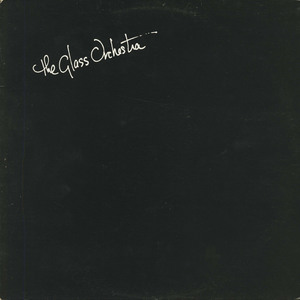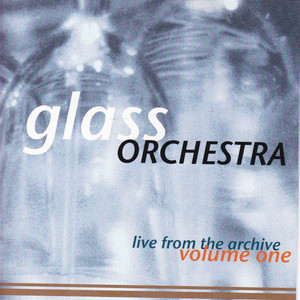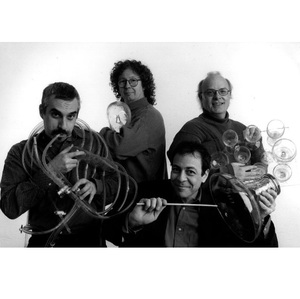Glass Orchestra
Websites:
https://www.thecanadianencyclopedia.ca/en/article/glass-orchestra-emc
Origin:
Toronto, Ontario
Biography:
The Glass Orchestra, founded in 1977, is the only ensemble in the world whose musicians create and perform contemporary compositions entirely with glass instruments. Drawing on a wide range of musical influences and performance techniques, the musicians explore the unique sonic properties of glass, creating an ethereal, percussive soundscape with a vast array of glass instruments, both "found" and custom made. The skill of the members of the Orchestra in designing and making glass instruments has earned them a place in the New Grove Dictionary of Musical Instruments.
The Glass Orchestra has appeared in major cities across Canada and has toured the United States from New York to Honolulu, and Europe from London to Berlin. In 1989, the ensemble completed an important seven-week tour of Asia, which took them to Taiwan, Macau, Kuala Lumpur, Bangkok, Singapore, Japan and the Shenzeng and Zuhai International Arts Festivals in China.
Because of the extremes of its dynamic and frequency ranges, glass music has always proved a challenge to record. The Glass Orchestra has released four commercial recordings, the most recent titled "HUMAN". Through the use of the most sophisticated equipment, listeners are provided with a faithful reproduction of the delicacy and transparency of the timbre of glass musical instruments. Distribution, on CD or cassette, is through the Canadian Music Centre.
To contact us send email to :erca@total.net (Eric Cadesky)
ERIC CADESKY (Artistic Director and curator of the Glass Orchestra FAQ) is the inventor of many of the handmade glass instruments played by the ensemble. Dedicated to extending the boundaries of traditional glass music, he is also a composer and percussionist with experience in African, Latin, Jazz and New Music ensemble performance. In addition Eric enjoys composing music for ballet and modern dance, feature films, theatre, video and television. His compositions have been performed around the world.
The performance experience of guitarist BILL PARSONS encompasses jazz, improvised, concert, popular, and world music. As a composer and arranger, he has worked within a wide range of musical settings from jazz and concert music to interdisciplinary works with filmmakers, photographers, theatre directors, and choreographers. Bill Parsons also writes poetry, lyrics, and has just finished co-writing a screenplay. Bill performs internationally with the Evergreen Club, John Wyre's Heartbeat Orchestra, Pirate Jennyand Sunda Duo, on Indonesian kacapi (20 string zither) with suling (bamboo flute)
PAUL HODGE is the Technical Director of the Music Gallery, Toronto, the Centre for Contemporary Music in Canada. Active in all aspects of music and sound production his numerous recordings have been broadcast on City-TV, CBC, BBC Great Britain and NHK Japan and released on LP, cassette and CD. Non-curricular interests include astronomy, parenting and surfing (in alphabetical order).
RICHARD SACKS received his Masters in music at the State University of New York at Stony Brook, where he studied with Raymond Desroches, Arthur Weisberg and Charles Rosen. He was a member of the Bennington College faculty from 1977-79 and maintained a freelance career in New York until moving to Toronto in 1981. Richard continues to perform with the Glass Orchestra, Arraymusic, The Evergreen Club, New Music Concerts and the Esprit Orchestra, as well as writing for dance and multi-media. He appears on many recordings with these and other groups.
(1978)
Glass Orchestra. Toronto new music ensemble that works exclusively in the medium of glass, employing custom- or hand-made instruments (eg, glass harmonica, flute, xylophone) and 'found' instruments (bowls, wine glasses, bottles, tubes, etc). It is the only permanent ensemble of its kind in the world. The Glass Orchestra dates its beginnings to late 1977, although three of its five founding members, Miguel Frasconi, Marvin Green, and John Kuipers, had previously worked in glass with other musicians (including John Oswald) at York University and the Music Gallery. V. Eric Cadesky (b Toronto 1956) and Paul Hodge (b Toronto 1955) completed the ensemble in 1977. After Kuipers's departure in 1980, the Glass Orchestra remained a quartet. Green left in 1983, his place taken by Gordon Phillips briefly; Jon Siddall 1983-5; John Puchiele 1985-9; Phillips again 1989-91; Michael J. Baker (b Edmonton 11 Aug 1949, d Toronto 9 Sep 2000) as of 1991; and Bill Parsons. Frasconi left in 1986, his place taken by Rob Poizner 1986-8 and Richard Sacks as of 1988.
The Glass Orchestra was based initially at Toronto's Music Gallery and has given many of its concerts in museums and art galleries. When the Music Gallery moved in 2000, the Glass Orchestra changed its home to The 401, an artist's collective on Richmond Street in Toronto.
Performances
The Glass Orchestra performs twice each year in Toronto, and has made many tours. Special guests have included the Evergreen Ensemble and electronic musician Eugene Martynec. It performed at the Ontario Science Centre in 1979, 1987, and 1988, at Expo 86, and at the Festival international de musique actuelle de Victoriaville in 1987. It has been heard frequently on CBC radio.
The ensemble made its European debut in 1980 with concerts in Berlin and Frankfurt; it returned to Berlin in 1981 for the Total Music Meeting and in 1982 for the OKanada cultural exhibition. Other early overseas performances included London (Victoria and Albert Museum, 1981); Bremen (Übersee Museum, 1981); and Amsterdam (Fest de Ijsbreker, 1985). It made its US debut in 1981 with performances at the State University of New York, Purchase, and at the 49th Parallel, New York City. Its other US engagements have included the International Glass Music festivals in Columbus, Ohio (1983,) and Oxford, Ohio (1985), and New Music America in Washington, DC (1983). An Asian tour in 1989 took the ensemble to China; Taiwan; Macao; Japan; Thailand (where it gave a command performance for Princess Sirindhorn with the traditional Thai ensemble Fong Nam); Malaysia; and Singapore. The Glass Orchestra has since toured extensively in the US, Europe, Southeast Asia, China, and Japan. More recent tours have taken it to Taiwan (2000) and Singapore (2003). It played at the inauguration of the Pittsburgh Glass Center during the Meltdown '01 gala in October 2001.
Style, Repertoire, and Instruments
The Glass Orchestra sets up on four carpets, each on a side of a large cube made of metal shafts. The various instruments of the ensemble - which collectively weigh half a tonne - are hung on the metal structure or placed on the carpets. The Glass Orchestra generally performs on candlelit stages in darkened halls because they "like to see the hundreds of reflections in the instruments" (Glass Orchestra website.)
It has also greatly advanced the craft of glass instrument-making. That the instruments it makes are fragile and do break highlights the exploratory and improvisatory nature of the ensemble, who regard such breakages as opportunities to discover different properties in the pieces of the shattered instrument.
The ensemble started by following more avant-garde traditions of sonic exploration. Though primarily an improvisation ensemble, it does play written works. Commissions include works by Drew Krause, John Mark Sherlock, and Jeff Harriott. Since its beginning, the Glass Orchestra has diversified its repertoire to include influences from jazz, as in All that Glazz; from Balinese music, as in the gamelan-influenced Neo Mandatto; and it performs a family show, as well as its core soundscape music such as its classic work, Dusk.
Recordings
Though the properties of glass instruments make them challenging to record, the orchestra has put out five albums: an LP, The Glass Orchestra (1977, Music Gallery Editions MGE-10); the EP Tales from Siliconesia (1980, GO-01); and the CDs Human (1988, GOMUSE Si-02) and Live from the Archives Vol I and II (2007). It recorded the soundtrack of the Hollywood film Girl, Interrupted in 2000.





